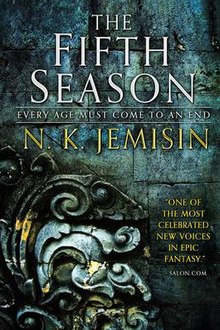Locus: The Magazine of The Science Fiction & Fantasy Field, founded in 1968, is an American magazine published monthly in Oakland, California. It is the news organ and trade journal for the English-language science fiction and fantasy fields. It also publishes comprehensive listings of all new books published in the genres. The magazine also presents the annual Locus Awards. Locus Online was launched in April 1997, as a semi-autonomous web version of Locus Magazine.

Nora Keita Jemisin is an American science fiction and fantasy writer. Her fiction includes a wide range of themes, notably cultural conflict and oppression. Her debut novel, The Hundred Thousand Kingdoms, and the subsequent books in her Inheritance Trilogy received critical acclaim. She has won several awards for her work, including the Locus Award. The three books of her Broken Earth series made her the first author to win the Hugo Award for Best Novel in three consecutive years, as well as the first to win for all three novels in a trilogy. She won a fourth Hugo Award, for Best Novelette, in 2020 for Emergency Skin. Jemisin was a recipient of the MacArthur Fellows Program Genius Grant in 2020.

The Hundred Thousand Kingdoms is a 2010 fantasy novel by American writer N. K. Jemisin, the first book of The Inheritance Trilogy. Jemisin's debut novel, it was published by Orbit Books in 2010. It won the 2011 Locus Award for Best First Novel and was nominated for the World Fantasy, Hugo, and Nebula awards, among others. Its sequel, The Broken Kingdoms, was also released in 2010.

The Broken Kingdoms is a fantasy novel by American writer N. K. Jemisin, the second book of her Inheritance trilogy. It takes place ten years after the events of The Hundred Thousand Kingdoms and centers around a young woman named Oree Shoth, who lives in the World Tree-shrouded, godling-inhabited city of Shadow.

Ancillary Sword is a science fiction novel by the American writer Ann Leckie, published in October 2014. It is the second novel in Leckie's "Imperial Radch" space opera trilogy, which began with Ancillary Justice (2013) and ended with Ancillary Mercy (2015). The novel was generally well-received by critics, received the BSFA Award for Best Novel and the Locus Award for Best Science Fiction Novel, and was nominated for the Nebula and Hugo awards.

Amal El-Mohtar is a Canadian poet and writer of speculative fiction. She has published short fiction, poetry, essays and reviews, and has edited the fantastic poetry quarterly magazine Goblin Fruit since 2006.

The Obelisk Gate is a 2016 science fantasy novel by N. K. Jemisin and the second volume in the Broken Earth series—following The Fifth Season, and preceding The Stone Sky. The Obelisk Gate was released to strong reviews and, like its predecessor in the series, won the Hugo Award for Best Novel.

The Stone Sky is a 2017 science fantasy novel by American writer N. K. Jemisin. It was awarded the Hugo Award for Best Novel, the Nebula Award for Best Novel, and the Locus Award for Best Fantasy Novel in 2018. Reviews of the book upon its release were highly positive. It is the third volume in the Broken Earth series, following The Fifth Season and The Obelisk Gate, both of which also won the Hugo Award.
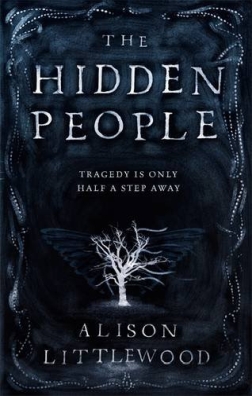
The Hidden People is a historical fantasy and horror novel by English writer Alison Littlewood, first published in the United Kingdom in October 2016 by Jo Fletcher Books. It is based on the 1895 incident in Tipperary, Ireland, where Bridget Cleary was burnt alive by her husband who believed she was a fairy changeling.
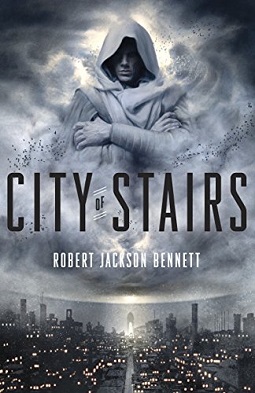
City of Stairs is a 2014 fantasy novel by Robert Jackson Bennett. The first in his "Divine Cities" trilogy, it was published by Broadway Books.
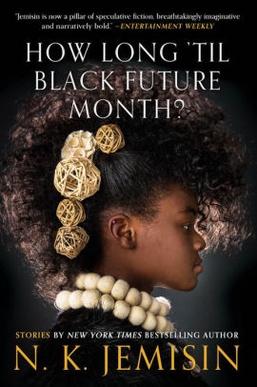
How Long 'til Black Future Month? is a collection of science fiction and fantasy short stories by American novelist N. K. Jemisin. The book was published in November 2018 by Orbit Books, an imprint of the Hachette Book Group. The name of the collection comes from an Afrofuturism essay that Jemisin wrote in 2013. Four of the 22 stories included in the book had not been previously published; the others, written between 2004 and 2017, had been originally published in speculative fiction magazines and other short story collections. The settings for three of the stories were developed into full-length novels after their original publication: The Killing Moon, The Fifth Season, and The City We Became.

The Black Tides of Heaven is a 2017 LGBT fantasy novella by Singaporean author Neon Yang. The story centers around the twin children of the Protector, whose magic powers cause them to become entangled in the political machinations of their mother. It is one of the first two novellas in the Tensorate series, the other being The Red Threads of Fortune. It was nominated for the Hugo Award for Best Novella, Locus Award for Best Novella, and World Fantasy Award for Best Novella.

Mikki Kendall is an author, activist, and cultural critic. Her work often focuses on current events, media representation, the politics of food, and the history of the feminist movement. Penguin Random House published her graphic novel Amazons, Abolitionists, and Activists in 2019, while her political nonfiction book Hood Feminism was released in early 2020.
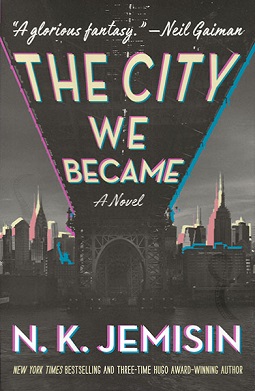
The City We Became is a 2020 urban fantasy novel by N. K. Jemisin. It was developed from her short story "The City Born Great", first published in her collection How Long 'til Black Future Month? It is her first novel since her triple Hugo Award-winning Broken Earth series and the first in her Great Cities series, followed by The World We Make, released in November 2022.
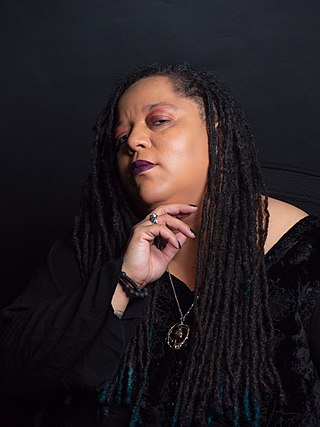
Tanya DePass, also known by her username Cypheroftyr, is an American journalist, activist and streamer. She is the founder of the non-profit organization I Need Diverse Games, which she established in 2016.
"Non-Zero Probabilities" is a speculative fiction short story by N.K. Jemisin, published in 2009 in Clarkesworld Magazine. The story features a semi-apocalyptic New York City where the laws of probability have shifted, and follows a young woman as she navigates a world driven by belief systems. Thematically, the short story deals largely with identity, belief, and society. It was nominated for both the Hugo and Nebula Awards, and was later published in other collections, including Jemisin's How Long 'til Black Future Month? anthology.
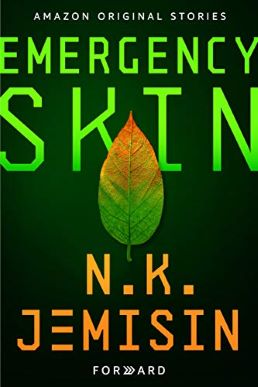
Emergency Skin is a science-fiction novelette written by N. K. Jemisin. The story was first published by Amazon Original Stories as part of the Forward short fiction collection in September 2019. The story was well received, and it was awarded a Hugo Award, an Audie Award, and an Ignyte Award in 2020.

Sojourner "Jo" Mullein, one of the characters known as Green Lantern, is a superheroine appearing in American comic books published by DC Comics. Created by Hugo Award-winning author N. K. Jemisin, with artwork by Jamal Campbell, she is a member of the Green Lantern Corps.
Far Sector is a miniseries in the DC Comics Green Lantern franchise, published from 2019 to 2021 by DC's imprint DC's Young Animal. The Green Lantern of the series is Sojourner Mullein, created by science fiction and fantasy writer N. K. Jemisin. Far Sector won the 2022 Hugo Award for "Best Graphic Story or Comic". Far Sector also received several more award nominations: three Eisner Awards nominations, a GLAAD Media Award for Outstanding Comic Book nomination, and an Ignyte Award. The series has an average critic rating of 8.7 out of 10 based on 169 reviews on the review aggregator website Comic Book Roundup.
Forward: Stories of Tomorrow is a 2019 collection of science fiction short stories curated by American author Blake Crouch and published by Amazon Original Stories. The collection consists of six stories, each written by a different author, namely: "Ark" written by Veronica Roth, "Summer Frost" by Crouch, "Emergency Skin" by N. K. Jemisin, "You Have Arrived at Your Destination" by Amor Towles, "The Last Conversation" by Paul G. Tremblay, and "Randomize" by Andy Weir.
